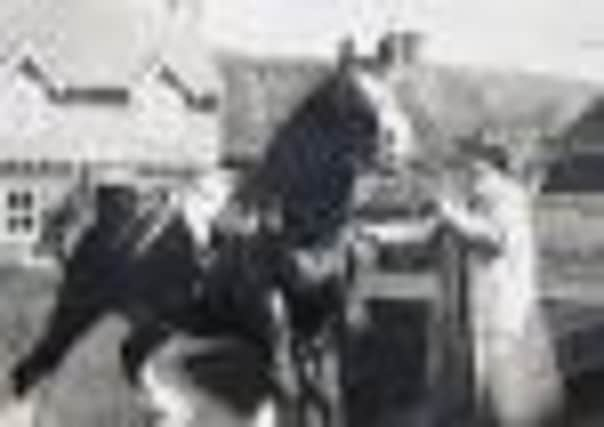Les recalls the era of the heavy horse


War Horse, the film, follows the famous Michael Murpurgo children’s story about just one of the thousands of animals requisitioned by the army.
As a teenager Les, now aged 87 and living in Villiers Street, originally followed his father, Harry, into the job of being a horse-handler.
Advertisement
Hide AdAdvertisement
Hide AdHe grew up hearing stories of his father walking stallions 30 to 40 miles a day as he toured farms from Northend to Fenny Compton, from Ladbrooke to Wormleighton and on through Northamptonshire and Oxfordshire, in response to calls about mares that may, or may not, be ready for breeding.
“You could try riding these giant Shires but you’d never be able to control them,” explained Les, whose father was 12 or 13 when he began breaking colts at Red House Farm in Kineton.
“As part of his training Harry had to do a season with the foxhounds at nearby Little Kineton and told Les how all the horses stabled there were commandeered for the First World War - and their grooms called up. Dad was called up himself in 1914 but was rejected because a stallion had kicked his shin and the wound was ulcerated,” said Les.
“As a lad I had a few close scrapes myself and got bitten and trodden on. But there was nobody like my father for handling horses. He told me when they came back from the war they were frightened and sometimes vicious.”
Advertisement
Hide AdAdvertisement
Hide AdMen like Harry Gibbins had the job of trying to calm the animals down and get them ploughing again. If that didn’t work they’d be sent for meat.
Before the Second World War, Harry had moved his family to Northend after being offered work at Old Leys Farm near the Burton Dassett hills.
Les, who was born in 1924, recalls: “I still remember leaving school on a Friday in the summer of 1938 and starting work washing horses’ legs at Old Leys on the Monday. That year I won a medal at the Henley-in-Arden Show. I also used to join dad in walking the stallions - usually I had the lighter Percherons. We’d go 20 miles in opposite directions and then meet somewhere on a country road.
“You couldn’t allow the stallions to get too close together or they’d fight. But they were 17 or 18 hands high and it was a hard job trying to get somebody to hold one of them back while you swapped over. Even some of the grooms were scared.”
Advertisement
Hide AdAdvertisement
Hide AdThis is less surprising when Les goes on to relay some of his other tales.
Like the deranged horse bought from Peterborough which his dad had suspected of not being right.It turned out the animal had been drugged and there was all hell to play as they tried to unload him from the train at Fenny Compton station. Les said: “Back at the farm I went into the box with him and managed to get a leading rein on him but he struck out with his forefeet. I only saved myself by jumping on top of a feed manger and then hanging from a rack above his head.
“Even then he bit at my legs and snapped right through two struts on the rack.
“He was supposed to go for meat but at Compton Verney somebody decided to try and work him. He ended up in the lake there where I heard he’d crippled two blokes.”
Advertisement
Hide AdAdvertisement
Hide AdBut Les has many more good stories than bad. He still keeps photographs of his father with a horse called Fylde Premier who was nicknamed ‘Bellringer.’
“Bellringer used to rear up his two front hooves and clap them together to make a ringing sound,” smiles Les, who was sorry when tractors took over and his brief career as a horse-handler was replaced by other jobs including his last one at the Harbury Cement works where he stayed until the 1950s.